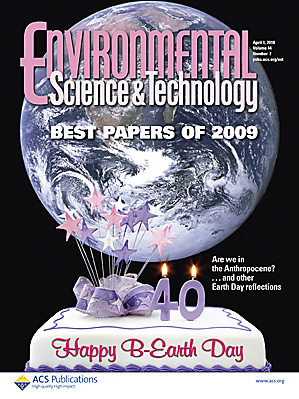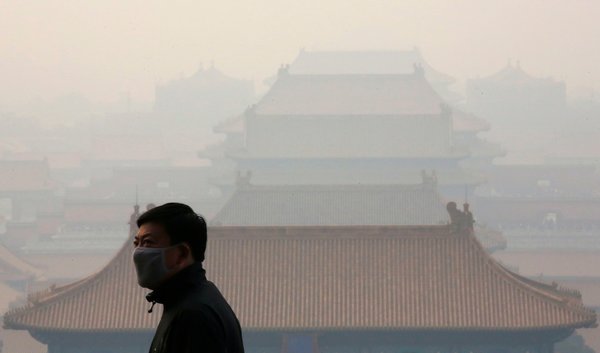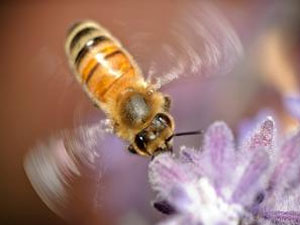Environmental Science Technology评选出2009年度最佳论文
时间:2010-04-04 阅读: 我要评论:
Environmental Science Technology评选出2009年度最佳论文
ES&T’s Best Papers of 2009

![]()
In 2009, ES&T published more than 1400 papers on a wide range of topics. But which papers were the top papers—the best of the year?
This year, our associate editors nominated papers that they felt were of the highest caliber—these are papers expected to have a significant and long-lasting impact on the field. A subcommittee from our editorial advisory board chaired by Susan Richardson pored over the nominations (of papers with an ASAP appearing in 2009) to create a short list for consideration in each category: environmental science, technology, and policy. I had the difficult task of trying to choose the best of the best.
We hope this brings special recognition to you, our authors, and focuses attention on your high-quality papers. The Best Paper Awards are an annual event announced online ahead of this print issue. This year includes a news story by Kellyn Betts (Environ. Sci. Technol. DOI 10.1021/es100414j), and video coverage of this year’s awarded papers will commence on our Web site (http://pubs.acs.org/journal/esthag) in May 2010. In addition, each author receives a certificate of recognition and our heartiest congratulations.
Environmental Science
Top Paper
Edwards, M.; Triantafyllidou, S.; Best, D. Elevated blood lead in young children due to lead-contaminated drinking water: Washington, DC, 2001−2004. Environ. Sci. Technol. 2009, 43 (5), 1618−1623 (Environ. Sci. Technol. DOI 10.1021/es802789w).
First Runner-up
Knapp, C. W.; Dolfing, J.; Ehlert, P. A. I.; Graham, D. W. Evidence of increasing antibiotic resistance gene abundances in archived soils since 1940. Environ. Sci. Technol. 2010, 44 (2), 580−587 (Environ. Sci. Technol. DOI 10.1021/es901221x).
Second Runners-up
Payne-Sturges, D.; Cohen, J.; Castorina, R.; Axelrad, D. A.; Woodruff, T. J. Evaluating cumulative organophosphorus pesticide body burden of children: A national case study. Environ. Sci. Technol. 2009, 43 (20), 7924−7930 (Environ. Sci. Technol. DOI 10.1021/es900713s).
Aeschbacher, M.; Sander, M.; Schwarzenbach, R. P. Novel electrochemical approach to assess the redox properties of humic substances. Environ. Sci. Technol. 2010, 44 (1), 87−93 (Environ. Sci. Technol. DOI 10.1021/es902627p).
Environmental Technology
Top Paper
Cao, X.; Huang, X.; Liang, P.; Xiao, K.; Zhou, Y.; Zhang, X.; Logan, B. E. A new method for water desalination using microbial desalination cells. Environ. Sci. Technol. 2009, 43 (18), 7148−7152 (Environ. Sci. Technol. DOI 10.1021/es901950j).
First Runner-up
Flury, B.; Frommer, J.; Eggenberger, U.; M
Second Runner-up
Armitage, J. M.; MacLeod, M.; Cousins, I. T. Comparative assessment of the global fate and transport pathways of long-chain perfluorocarboxylic acids (PFCAs) and perfluorocarboxylates (PFCs) emitted from direct sources. Environ. Sci. Technol. 2009, 43 (15), 5830−5836 (Environ. Sci. Technol. DOI 10.1021/es900753y).
Environmental Policy
Top Paper
Hertwich, E. G.; Peters, G. P. Carbon footprint of nations: A global, trade-linked analysis. Environ. Sci. Technol. 2009, 43 (16), 6414−6420 (Environ. Sci. Technol. DOI 10.1021/es803496a).
First Runner-up
Newcomer, A.; Apt, J. Near-term implications of a ban on new coal-fired power plants in the
Second Runner-up
Su, J. G.; Morello-Frosch, R.; Jesdale, B. M.; Kyle, A. D.; Shamasunder, B.; Jerrett, M. An index for assessing demographic inequalities in cumulative environmental hazards with application to
| 藏在纺织物上的“细菌电池”吸收汗水发电 |
| 德国科研人员发明回收磷的新技术 |
| PNAS:新型阴极材料使“微生物燃料电池”可高效利用污水发电 |
| 等离子体降解蓝藻毒素机理 |
| “人造树叶”可将水变成氢能源 |
| 《Science》:瑞典科学家基于造纸废弃物开发出太阳能电池阴极材料 |
特别声明:本文转载仅仅是出于传播信息的需要,版权归原作者所有,并不意味着代表本网站观点或证实其内容的真实性; 如其他媒体、网站或个人从本网站转载使用,须保留本网站注明的“来源”,并自负版权等法律责任; 作者如果不希望被转载或者联系转载稿费等事宜,请与我们接洽:service#environmentor.cn(请将#改为@)。
来源:ES&T 作者:Environmentor (环境人 Environmentor.Cn)





